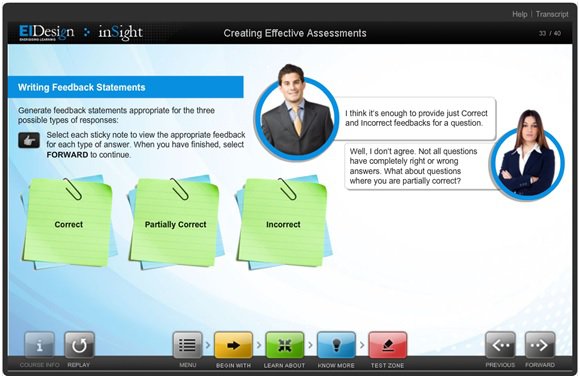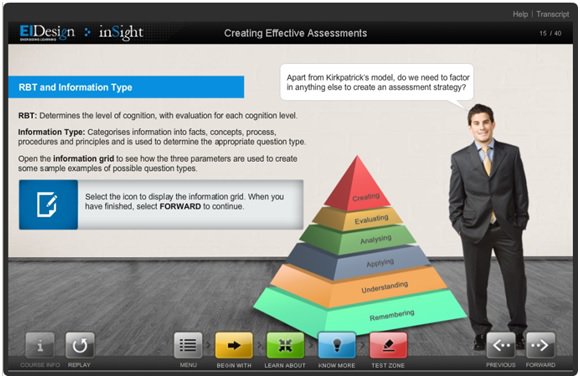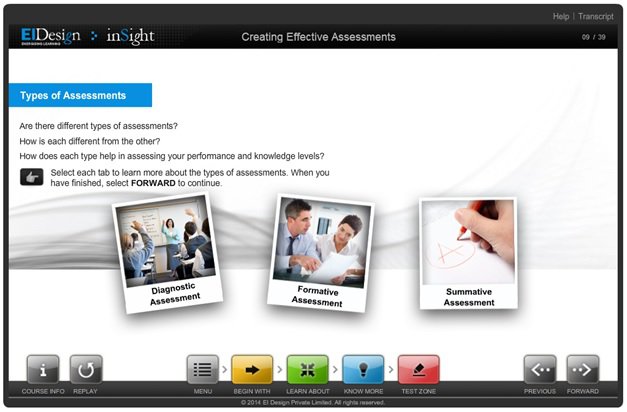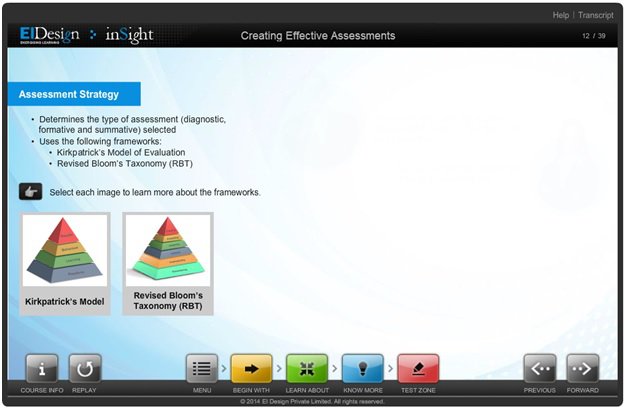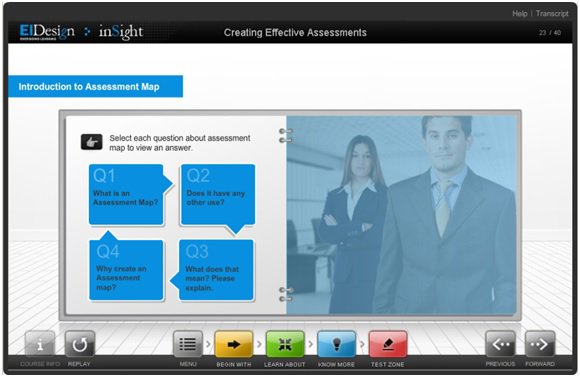
The article describes the methods that can be used to create effective assessment strategies in eLearning courses. It also outlines the various types of assessments that are used in eLearning courses. Additionally, the article elucidates the various ways to create effective assessments and provide diagnostic feedback to the learners. An interesting framework, Assessment Map is also discussed here. Assessment map helps the Instructional Designers to create the right assessments for each of the Learning Objectives.
How To Create Effective Assessment Strategies
In this article, I will share the learning strategy used by us for the “Creating Effective Assessments” course for our Instructional Designers. I will provide tips on how we can use a master scenario to drive the entire course and how we can highlight each learning aspect through a series of questions/answers and discussions.
Background
As we know, every eLearning course includes Formative and Summative Assessments. Are there any principles that we need to adhere to while creating Assessments? Are these merely questions that evaluate the learning outcomes? How can we use the theoretical frameworks to develop effective Assessment strategies?
These are some of the questions that every Instructional Designer faces and the course addresses them in an interesting Q&A format through a simple narrative. This course was initially designed as an internal training material for our Instructional Design team. Earlier this year, we converted this into a product; our ProductLine InSight Suite that has 15 online courses for Instructional Designers. Each course featured in our ProductLine has a distinct learning strategy and is a case study for Instructional Designers on how to create an immersive learning experience.
Learning mandate
The course mandate was to outline strategies to create effective Assessments and highlight the theoretical frameworks with a focus on how they can be applied practically (through an Assessment Map).
Instructional strategy
The course strives to provide the answer to “How to create effective Assessments?” in a Q&A format (rather appropriate given the subject) through two Instructional Designers.
Cast of characters
We identified the following cast for our narrative:
- Tim
- Brenda
Tim and Brenda are Instructional Designers and they discuss their observations, questions, and tips on how to create effective assessment strategies. Their discussion and questions form a cohesive and connecting thread for the course.
While both are Instructional Designers and colleagues, they have a slightly different view on each learning element in the course. We have used the difference in their viewpoints to create a forum to:
- Question a given perspective or assumption.
- Discuss theoretical frameworks and how they can be used.
- Deep-dive (focus on what, why, and how).
- Evaluate strategies.
- Introduce a new learning aid (Assessment Map) and the value it brings in.
Our solution
Using characters that the learners can relate to enables them to imbibe information comfortably and also helps them get the context to map it to their work. The characters pose appropriate questions and engage in discussions/conversations.
This approach can be used in other courses to:
- “Inform” or “introduce” a concept in a screen
- “Summarize” the takeaways of the concept/idea that is presented
- Provide a walk-through on the key learning areas (process, procedure, and so on)
- Provide interactive exercises/pause and think questions
Outcome
Through the use of two primary characters (Tim and Brenda), the course is able to logically chunk and provide information about:
- Assessments and their types
- Tips and guidelines for creating effective questions
- How to provide suitable feedback
- Theoretical Assessment frameworks and how they can be used practically
- A useful learning aid (Assessment Map) that can help Instructional Designers practically apply the learning at work
The characters raise and debate on questions that any Instructional Designer would face in a real-world setting, thereby providing “answers” to queries on how to write effective assessments for an actual course.
I hope you found our approach useful and will be able to use it to engage your learners. I look forward to your feedback.
